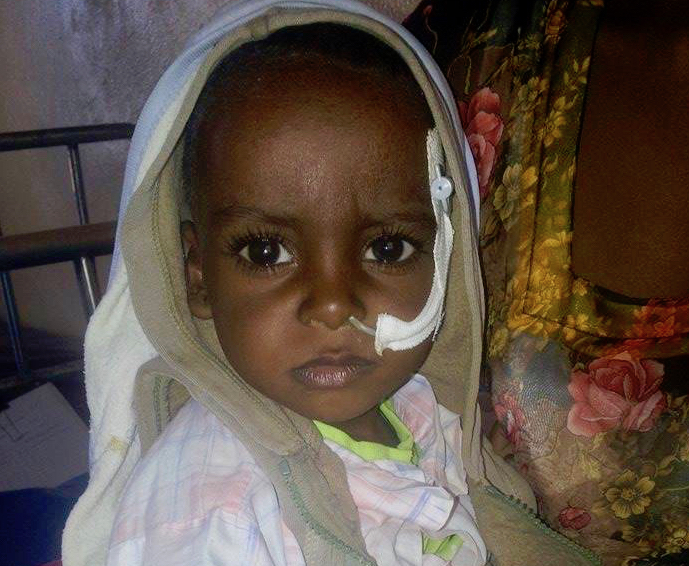Source: ACAPS – an independent information provider – has just declared Eritrea to be a nation in which it is all but impossible for humanitarians to work.
Three nations are given the designation – “Extreme access constraints” – the other two are Syria and Yemen. Both are at war: Eritrea is not.
Full report here.
Gathering information is extremely difficult, but ACAPS’s assessment is that Eritrea’s risk of humanitarian crisis and disaster to be high, with
- 4,955,000 People affected
- 3,964,000 People in need
Eritrea retains its status as one of the countries with the highest access constraints. INGOs are prohibited in the country.
President Isaias Afwerki allows only a few UN agencies to operate, including UNICEF, FAO, and UNHCR, which has defined the operational environment as “challenging, but permissible for day-to-day activities”.
Incoming funds from the UN and other donor agencies are subject to strict limitations and must pass through the Government of Eritrea.
Information gaps are noticeable, for example on the obstacles encountered by Eritreans in accessing services or movement restrictions within the country.
Historically, Eritrea has not shared information about the level of humanitarian needs.
Overview
The Eritrean government significantly restricts humanitarian access and there is very little information on humanitarian needs. The country is governed by a one-party state; elections have not been held since 1993.
Human rights violations including arbitrary detention, indefinite national/military service, and extrajudicial killings have been reported.https://www.hrw.org/world-report/2019/country-chapters/eritrea OHCHR 26/05/2018 https://www.ohchr.org/en/NewsEvents/Pages/DisplayNews.aspx?NewsID=23262&LangID=E" class="wysiwyg_source" style="border-bottom-color: rgba(0, 0, 0, 0.2); border-bottom-style: solid; border-bottom-width: 1px; box-sizing: border-box; color: rgb(0, 147, 194); outline-color: invert; outline-style: none; outline-width: medium; text-decoration: none; transition-delay: 0s; transition-duration: 0.1s; transition-property: all; transition-timing-function: ease-in-out;" href="https://www.acaps.org/country/eritrea/crisis/complex-crisis#">?
Following the signing of the “Joint Declaration of Peace and Friendship” by the governments of Ethiopia and Eritrea in July 2018, border crossings between the two countries were re-opened in September 2018 for the first time in 20 years. However, the last open border crossing was closed in April 2019, with no official reason given.https://www.bbc.com/news/topics/cz4pr2gdgjyt/eritrea" class="wysiwyg_source" style="border-bottom-color: rgba(0, 0, 0, 0.2); border-bottom-style: solid; border-bottom-width: 1px; box-sizing: border-box; color: rgb(0, 147, 194); outline-color: invert; outline-style: none; outline-width: medium; text-decoration: none; transition-delay: 0s; transition-duration: 0.1s; transition-property: all; transition-timing-function: ease-in-out;" href="https://www.acaps.org/country/eritrea/crisis/complex-crisis#">?
Eritrea is subject to harsh climatic conditions, including cyclical drought and flooding during rainy seasons. These events heighten the vulnerability of communities, making it difficult for families to fully recover from the effects of one emergency before another strikes. In recent years, the country’s climatic conditions have tested the coping capacities of the population, which is largely dependent (80%) on subsistence agriculture.https://reliefweb.int/sites/reliefweb.int/files/resources/2019-HAC-Eritrea%281%29.pdf" class="wysiwyg_source" style="border-bottom-color: rgba(0, 0, 0, 0.2); border-bottom-style: solid; border-bottom-width: 1px; box-sizing: border-box; color: rgb(0, 147, 194); outline-color: invert; outline-style: none; outline-width: medium; text-decoration: none; transition-delay: 0s; transition-duration: 0.1s; transition-property: all; transition-timing-function: ease-in-out;" href="https://www.acaps.org/country/eritrea/crisis/complex-crisis#">?Domestic food production is estimated to meet only between 60-70% of the population’s needs.https://reliefweb.int/sites/reliefweb.int/files/resources/UNICEF%20Eritrea%20Humanitarian%20Situation%20Report%20-%20December%202018.pdf" class="wysiwyg_source" style="border-bottom-color: rgba(0, 0, 0, 0.2); border-bottom-style: solid; border-bottom-width: 1px; box-sizing: border-box; color: rgb(0, 147, 194); outline-color: invert; outline-style: none; outline-width: medium; text-decoration: none; transition-delay: 0s; transition-duration: 0.1s; transition-property: all; transition-timing-function: ease-in-out;" href="https://www.acaps.org/country/eritrea/crisis/complex-crisis#">?
INFORM measures Eritrea’s risk of humanitarian crisis and disaster to be high, at 5.2/10.http://www.inform-index.org/Portals/0/Inform/2019/country_profiles/ERI.pdf" class="wysiwyg_source" style="border-bottom-color: rgba(0, 0, 0, 0.2); border-bottom-style: solid; border-bottom-width: 1px; box-sizing: border-box; color: rgb(0, 147, 194); outline-color: invert; outline-style: none; outline-width: medium; text-decoration: none; transition-delay: 0s; transition-duration: 0.1s; transition-property: all; transition-timing-function: ease-in-out;" href="https://www.acaps.org/country/eritrea/crisis/complex-crisis#">?





















